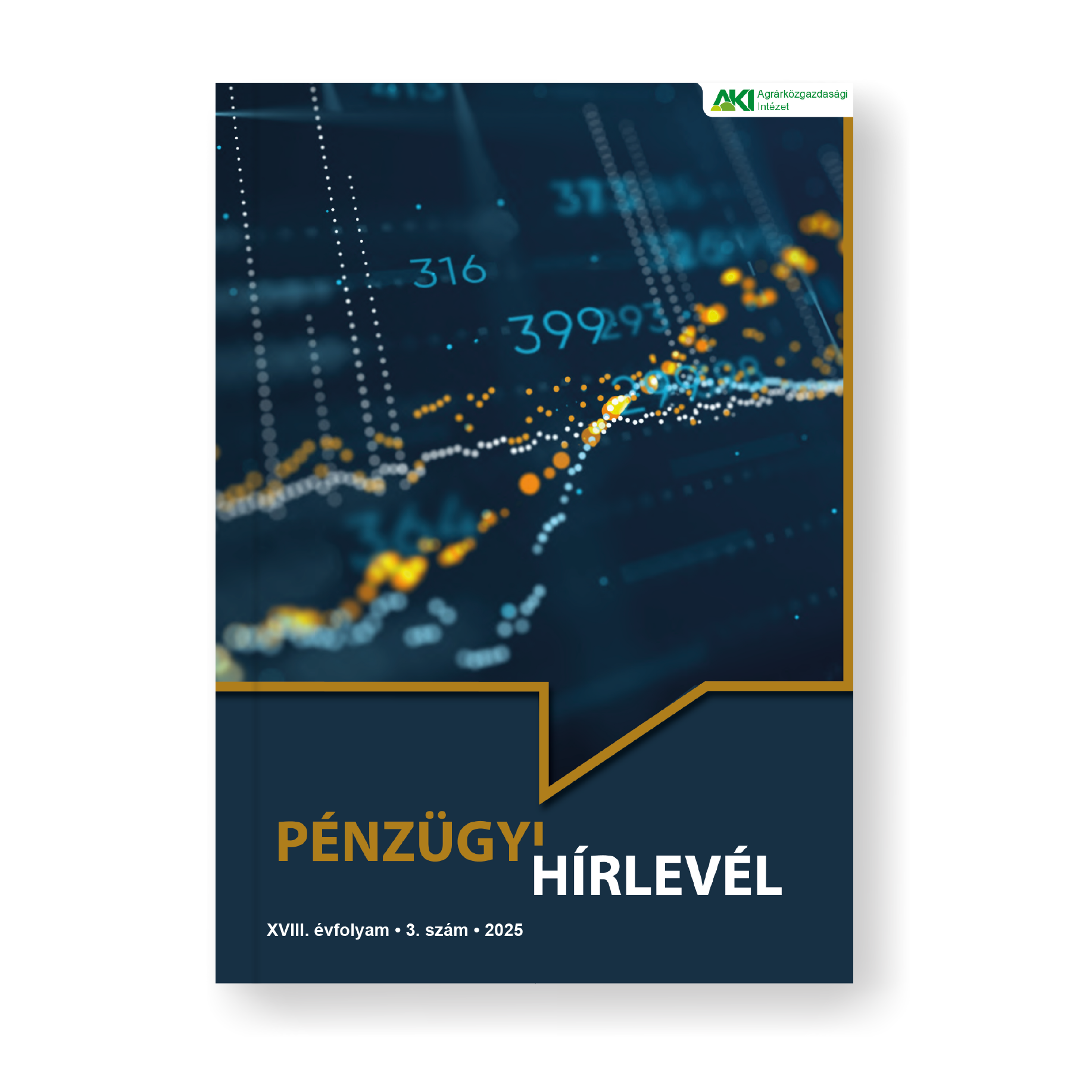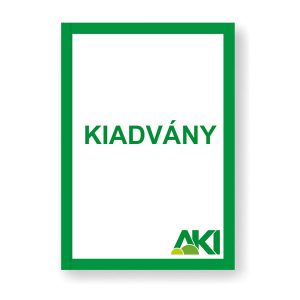Leírás
- A 2021–2022-es átmeneti évek után 2023. január 1-jén hatályba lépett a 2023–2027-es időszakra szóló közös agrárpolitika. Ezzel párhuzamosan tart még a 2014–2020-as ciklus lezárása.
- Agrár- és vidékfejlesztési támogatásokra 602,3 milliárd forintot fizettek ki június 30-ig.
A folyósított támogatási összeg 55,5 százaléka (334,6 milliárd forint) európai uniós forrásból származott, 44,5 százalékát (267,8 milliárd forint) hazai költségvetésből fizették ki. - Az agrár- és vidékfejlesztési támogatások között a vidékfejlesztési és halászati programok kifizetései domináltak (51,1 százalék), melyek meghaladták a 307 milliárd forintot. A közvetlen támogatások a kifizetések több mint egyharmadát (38,3 százalék) képezték, 230,6 milliárd forint kifizetésére került sor 2025. június 30-ig. A nemzeti támogatásokra 55,0, a piaci és egyéb támogatásokra együttesen 8,8 milliárd forintot folyósítottak.
- Az egyes ágazatok támogatottságát vizsgálva elmondható, hogy a szántóföldi növénytermesztők kapták a támogatások 34,8 százalékát, az állattenyésztők a támogatások 17,6 százalékát használhatták fel, a kertészet részesedése pedig csupán 3,6 százalék volt.
- A nemzeti agrárkárenyhítési rendszer keretében (I. pillér) a 2024. évi időjárás okozta károk kompenzálására 29,8 milliárd forintot folyósítottak 2025-ben a jogosult termelők számára.
- A mezőgazdaság hitelállománya 5,4 százalékkal 1014,1 milliárd forintra mérséklődött az előző év azonos időszakához képest. Ezen belül a kedvezményes hitelek aránya 60,9 százalékot, a piaci hitelek részesedése pedig 39,1 százalékot tett ki június 30-án.
- A mezőgazdaságban tevékenykedő egyéni gazdaságok hitelállománya 3,9 százalékkal 372,1 milliárd forintra csökkent. Az egyéni gazdaságok hitelein belül a legnagyobb hányadot kitevő (65,5 százalék) beruházási hitelek 1,2 százalékkal 249,1 milliárd forintra mérséklődtek. A hitelek zöme a szántóföldi növénytermesztőket finanszírozta.
A mezőgazdaságban tevékenykedő egyéni vállalkozások újonnan felvett hiteleinek összege 2,0 milliárd forinttal volt kevesebb az egy évvel korábbinál. - A mezőgazdasági társas vállalkozások hitelállománya 6,7 százalékkal 642,0 milliárd forintra csökkent, amelyben a hosszú lejáratú forgóeszközhitelek csökkenése játszotta a legfőbb szerepet. A hitelállományból legnagyobb mértékben az állattenyésztési ágazat részesedett. A mezőgazdasági társas vállalkozások újonnan felvett hiteleinek összege 6,0 milliárd forinttal volt több az egy évvel korábbinál.
- A mezőgazdaság garantált hitelállományának a korábbi időszakban tapasztalt dinamikus növekedése megtorpant, az állomány alig változott az elmúlt egy évben.
A lízingcégek szerződésszáma és a tőkekintlévőség összege is jelentősen nőtt. - A jegybanki alapkamat, valamint a mezőgazdasági hitelek nagy részének kamatlábai egyaránt mérséklődtek az előző év azonos időszakához képest. A mezőgazdasági piaci devizahitelek kamatainak csökkenése a legtöbb alágazatban jelentősen meghaladta a forinthitelek kamatainak csökkenését.
- Az élelmiszeripar hitelállománya 0,5 százalékkal 709,0 milliárd forintra nőtt 2025 második negyedévének végére. Az ágazat hitelállományában a kedvezményes hitelek aránya 37,5 százalékot tett ki, amely jóval kisebb volt, mint a mezőgazdaságban felvett kedvezményes hiteleké.
- Az egyéni vállalkozások hitelállománya 13,7 százalékkal 5,6 milliárd forintra bővült, a társas vállalkozásoké 0,4 százalékkal 703,4 milliárd forintra emelkedett. A rövid lejáratú hitelek aránya 2025 második negyedévében a teljes egyéni hitelállományból 34,0 százalékot, a társas hitelállományból 30,9 százalékot tett ki. A társas vállalkozások hitelállományának legnagyobb részét a kiemelt alágazatok közül a malomipari termék, keményítő gyártása alágazatban tevékenykedő vállalkozások adták (19,3 százalék), ezt követte a húsfeldolgozás alágazat (16,9 százalékkal).
- Az élelmiszeripari egyéni vállalkozások újonnan felvett hiteleinek összege 0,2 milliárd forinttal, a társas vállalkozásoké 42,5 milliárd forinttal haladta meg az egy évvel korábbit.
- Az ágazat garantált hitelállománya 3,5 százalékkal csökkent 2025 második negyedévére.
- Az élelmiszeripari piaci forinthitelek kamatai jellemzően ereszkedtek az egyes hiteltípusoknál, a devizahitelek esetében minden hiteltípus esetén csökkenés történt a kamatszintben az előző év azonos időszakához képest. Az élelmiszeripari alágazatok éven túli forinthiteleinek kamatai túlnyomó részben nőttek.
- A mezőgazdasági hitelportfólió minősége romlott 2025 második negyedévében.
- A nemteljesítő hitelek aránya a mezőgazdaság alágazatai közül az állattenyésztésben és a szántóföldi növénytermesztésben javult. Az NPL-ráta szinte minden hiteltípusnál kedvezően alakult (csökkent) a szóban forgó ágazatban. Az élelmiszeriparban a legtöbb hiteljelleg esetén szintén javulás volt megfigyelhető a mutató értékében az előző év azonos időszakához képest.
- After the transition years 2021–2022, the Common Agricultural Policy for the period 2023–2027 entered into force on 1 January 2023. At the same time, the closing of the 2014–2020 period is in progress.
- A total of HUF 602.3 billion was paid for agricultural and rural development subsidies by 30 June. 55.5 per cent (HUF 334.6 billion) of the subsidies came from European Union funds and 44.5 per cent (HUF 267.8 billion) was paid from the domestic budget.
- Payments of the rural development and fisheries programs dominated in agricultural and rural development payments (51.1 per cent), which exceeded the HUF 307 billion. Direct subsidies accounted more than a third (38.3 per cent) of payments, with HUF 230.6 billion paid by 30 June 2025. Farmers received HUF 55.0 billion in national subsidies, and HUF 8.8 billion in market and other subsidies.
- Examining the support of each sector it can be stated that arable crop growers received 34.8 per cent of the subsidies, while livestock farmers could use 17.6 per cent of the support and the share of horticulture was only 3.6 per cent.
- Within the framework of the national agricultural compensation scheme (Pillar I), HUF 29.8 billion was paid to eligible farmers in 2025 to compensate for the damages caused by the weather in 2024.
- The amount of credit in agriculture decreased by 5.4 per cent to HUF 1014.1 billion compared to the same quarter of the previous year. Within this the rate of subsidised loans was 60.9 per cent while the share of market loans was 39.1 per cent on June 30, 2025.
- The credit amount of the individual farms decreased moderately, by 3.9 per cent to HUF 372.1 billion. Among the loans to individual farms, investment loans continued to predominate, with their stock moderating by 1.2 per cent to HUF 249.1 billion, accounting for 65.5 per cent of total loans. Most of the credits were used to support arable crop growers. The value of new loans of individual farms in agriculture was HUF 2.0 billion lower than in the previous year.
- The credit amount of the agricultural enterprises moderated by 6.7 per cent to HUF 642.0 billion. The decrease was caused mainly by the long-term working capital loans. The livestock sector accounted for the largest share of the credit. The amount of new loans taken out by agricultural enterprises was HUF 6.0 billion higher than in the previous year.
- The guaranteed loans of agriculture have not changed after dynamic growth in recent years. At the same time the contract number of leasing companies and their capital adequacy increased in the sector.
- The base rate of the central bank and the interest rates of most agricultural loans have decreased compared to the same quarter of the previous year. The decline in the interest rates on market foreign currency agricultural loans has significantly exceeded the drop in the interest rates on HUF loans.
- In the food industry the amount of loans increased by 0.5 per cent to HUF 709.0 billion by the end of the second quarter of 2025. The share of subsidised loans (37.5 per cent) in the sector’s loan portfolio was much lower than in the agriculture.
- The credit amount of the individual food companies increased by 13.7 per cent to HUF 5.6 billion, and of the corporate enterprises increased by 0.4 per cent to HUF 703.4
The share of short-term loans of total ‘individual’ loans was 34.0 per cent, while in case of ‘corporate’ loans it was 30.9 per cent in the second quarter of 2025. The biggest part (19.3 per cent) of the loans in the food industry was granted for food corporations operating in the manufacture of grain mill products, starches and starch products sub-sector. This was followed by the processing and preserving of meat and production of meat products sub-sector with a share of 16.9 per cent. - The amount of new loans of individual enterprises in the food industry exceeded the value of a year earlier by HUF 0.2 billion, while that of corporate enterprises was HUF 42.5 billion higher than in the previous year.
- Guaranteed loans of the sector decreased by 3.5 per cent in the second quarter of 2025.
- In the food industry interest rates on market HUF loans generally declined for different loan type categories, while all types of foreign currency loans decreased in interest rates compared to the same period of the previous year. In the food sub-sectors interest rates on long-term HUF loans increased in most food industry sub-sectors.
- The quality of the agricultural loan portfolio deteriorated in the second quarter of 2025.
- The ratio of non-performing loans improved in animal production and arable crop production among the agricultural sub-sectors. The NPL ratio developed favorably (decreased) for almost all loan types in the mentioned sector. In the food industry, the NPL ratio also showed improvement for most types of loans compared to the same period of the last year.



 EN
EN

